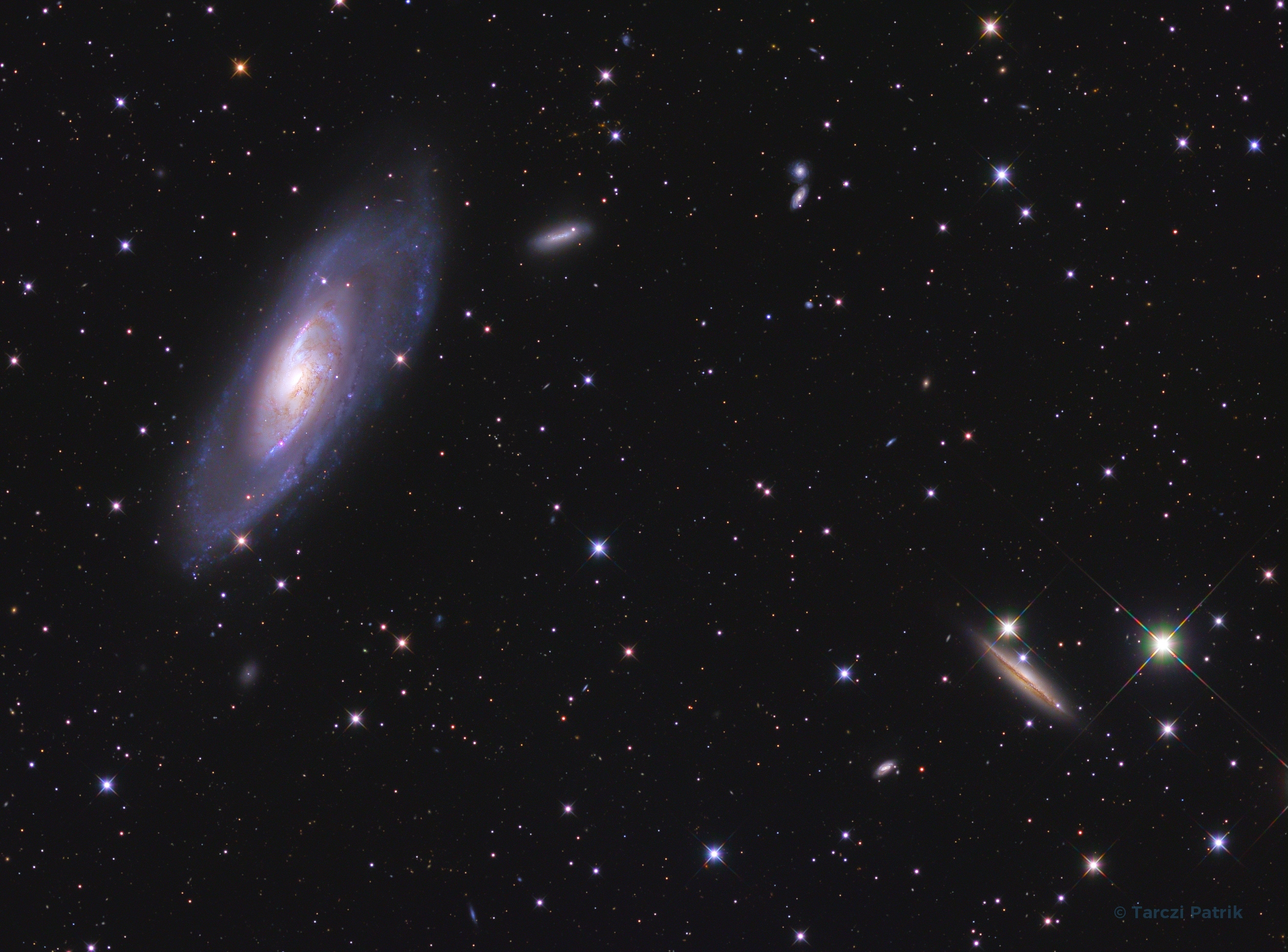M106 and it's neighborhood
NGC4217, NGC4248, NGC4231, NGC4232, NGC4226

Technical data
| Instrument: | 173/700 Newton-astrograph (ZsIO), SkyWatcher comacorrector F/4 |
| Camera: | Atik One 6.0 |
| Filter: | Astronomik Type2c LRGB |
| Mount: | SkyWatcher NEQ6 Pro Synscan (modified) |
| Guiding: | Lacerta M-Gen autoguider, OAG |
Image data
| Exposure time: | L: 66*10 mins, R: 43*10 mins, G:39*10 mins, B:35*10mins |
| Location, date: | Hungary, Izsákfa - 2015. several nights in March and April |
| Transparency: | 7/10 |
| Temperature: | 8 °C |
| FWHM: | 2.20" |
| Processing: | CCDStack, Registar, Pixinsight LE, Photoshop |
Description
A big, bright, beautiful spiral, Messier 106 is at the top left of this galaxy filled cosmic vista. The one degree wide telescopic field of view looks toward the well-trained constellation Canes Venatici, near the handle of the Big Dipper. Also known as NGC 4258, M106 is about 80,000 light-years across and 23.5 million light-years away, the largest member of the Canes II galaxy group.
For a far away galaxy, the distance to M106 is well-known in part because it can be directly measured by tracking this galaxy's remarkable maser, or microwave laser emission. Very rare but naturally occuring, the maser emission is produced by water molecules in molecular clouds orbiting its active galactic nucleus.
Another prominent spiral galaxy on the scene, viewed nearly edge-on, is NGC 4217 below and right of M106. The distance to NGC 4217 is much less well-known, estimated to be about 60 million light-years. Source: apod.nasa.gov
Achievements:
The Winner of the Atik 2015 AstroImaging Competition
Technical data
| Instrument: | 173/700 Newton-astrograph (ZsIO), SkyWatcher comacorrector F/4 |
| Camera: | Atik One 6.0 |
| Filter: | Astronomik Type2c LRGB |
| Mount: | SkyWatcher NEQ6 Pro Synscan (modified) |
| Guiding: | Lacerta M-Gen autoguider, OAG |
Image data
| Exposure time: | L: 66*10 mins, R: 43*10 mins, G:39*10 mins, B:35*10mins |
| Location, date: | Hungary, Izsákfa - 2015. several nights in March and April |
| Transparency: | 7/10 |
| Temperature: | 8 °C |
| FWHM: | 2.20" |
| Processing: | CCDStack, Registar, Pixinsight LE, Photoshop |
Recommended photos

In the shadow of VdB152
VdB152 is a reflection nebula, which is illuminated by a star. The molecular cloud, LDN1216, is a dark nebula located in constellation Cepheus.

NGC3184 galaxy
NGC 3184 is a spiral galaxy approximately 40 million light-years away in the constellation Ursa Major. It has two HII regions named NGC 3180 and NGC 3181.

Globular star cluster Omega Centauri
Omega Centauri, our brightest global cluster is located in constellation Centaurus, It is the biggest global cluster can be seen from Earth at a disctance of 15 800 light-years.


